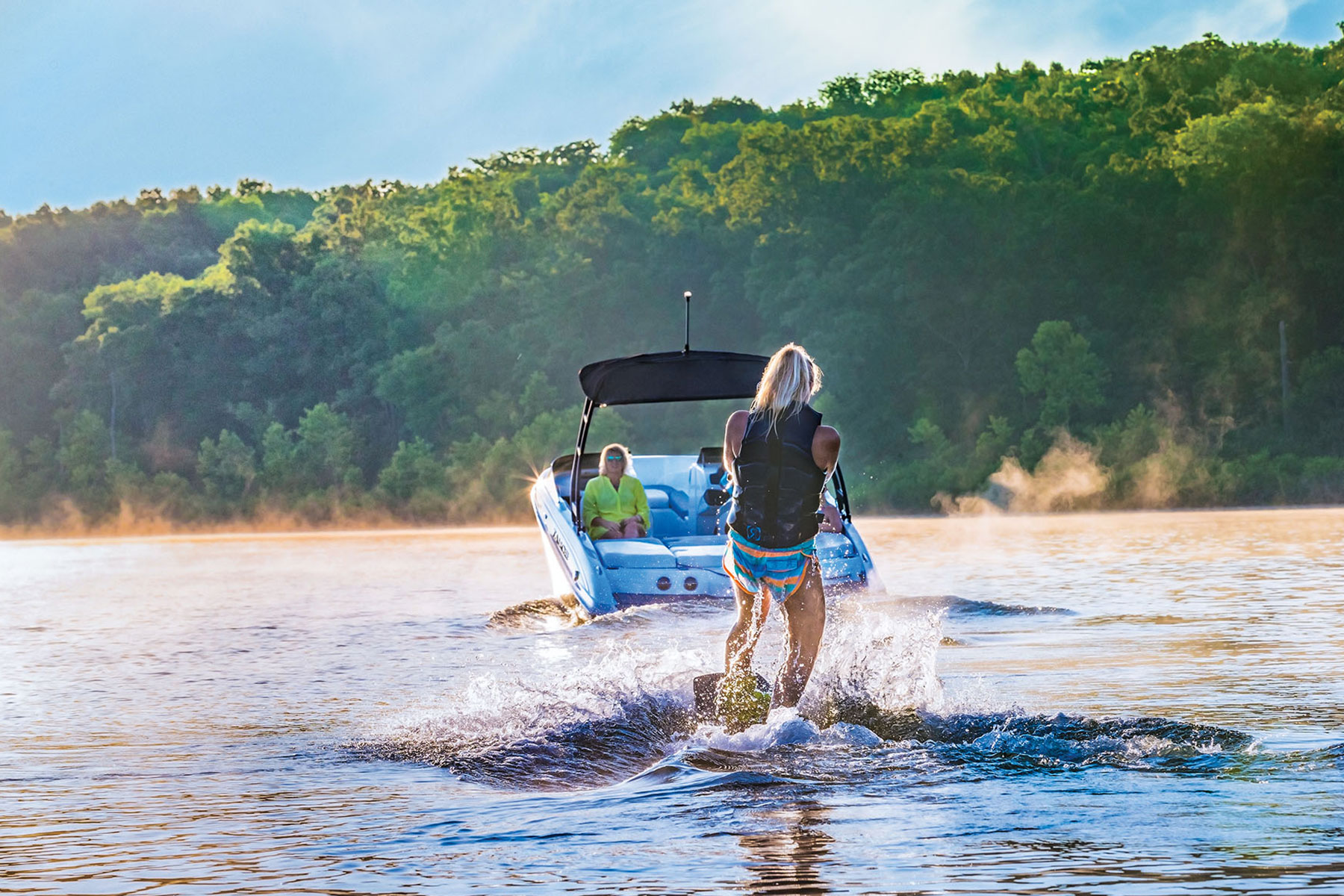Birds of a feather flock together. When a boater is in need, another will gladly pitch in to help. Such is the case with rendering aid and towing a fellow boater in need, right? Not necessarily, and here is why.
When it comes to towing another boat, your immediate reaction to help should be tempered by a strong dose of common sense. There are reasons to say no, and there are do’s and don’ts to follow if you say yes. Before you think of tossing a ski tow line to a boat adrift, read on for our suggestions on how to do it safely and effectively.
Don’t: Use three-strand nylon ski tow rope. It stretches under extreme pressure and can break, putting passengers in both boats in peril. Also avoid using dock lines. Those weaken over time and don’t have exact breaking strengths.
Do: Use a towline of at least eight to 10 boat lengths. Anchor line will suffice, due to its length and strength.
Don’t: Attach the tow line to a single deck cleat. This setup degrades your ability to steer and puts a lot of strain on the cleat, which could become an airborne projectile should it break off.
Do: Make a towing bridle from anchor line that can be attached between the two stern cleats of your boat. The length should be twice the length of the beam, and positioned low to the water.
Don’t: Use knots that cinch so tight you cannot untie them. Avoid being in a direct line with a taut tow line, just in case it breaks and goes airborne.
Do: Use cleat hitches and bowlines that can be easily untied should you need to quickly do so while underway.
Don’t: Hitch up to the tow and proceed without a means of communicating between the boats.
Do: Use your mobile phone or VHF radio, if both boats are equipped. You need basic communication should you need to make a change in the plans, or should something go wrong.
Don’t: Take off and go full steam ahead.
Do: Advance slowly to remove the slack from the tow line, then you can throttle up to reach the desired towing speed. Just as important as communicating is observing. Keep watch throughout the tow. If there are any issues, you can catch them before larger problems occur.
Don’t: Tie the towline and leave it as is during the tow.
Do: Be prepared to adjust the length of the towline. A long towline is best in open water, as it acts as a shock absorber, while keeping a safe distance between the boats. You can shorten the towline in calm waters or for more accurate maneuvering at a harbor. Adjust length so your boat and the tow are in sync with the waves, so both vessels simultaneously are on the crest or in the troughs. This setup also allows the towed boat to glide back and forth on the bridle without resistance.
Don’t: Try and be a seafaring Samaritan when encountering questionable weather. Your first instinct might be to pitch a line and rescue the stranded boat, when there might be a safer and better option.
Do: In choppy water, or if the boat is larger than your vessel, the wiser alternative is to summon the law enforcement agency charged with patrolling the waterway. Professional towing services like those offered with a BoatUS membership have experts capable of handling such conditions. State marine police, municipal police and county sheriff departments are other considerations. On larger bodies of water, contact the U.S. Coast Guard.
Boats float effortlessly across the water, but they are still very heavy. Waves and wind can produce a lot of force on deck cleats and dock lines. Snapped lines and damaged hardware is one thing. So is the strain the forces of towing put on the engine and prop. A prop meant for planing speeds won’t cut it for the low-speed torque needed to tow a boat. What might work for a smaller boat in calm water will not when towing a boat of the same size or larger. Above all else, high waves, strong currents and inclement weather can make towing dangerous—for you and the other boater—and you could both end up stranded.
If you aren’t 100 percent comfortable with towing, don’t do it. Stand by while awaiting additional help, and leave the big jobs for professional towing services with the proper equipment, insurance and knowledge.


